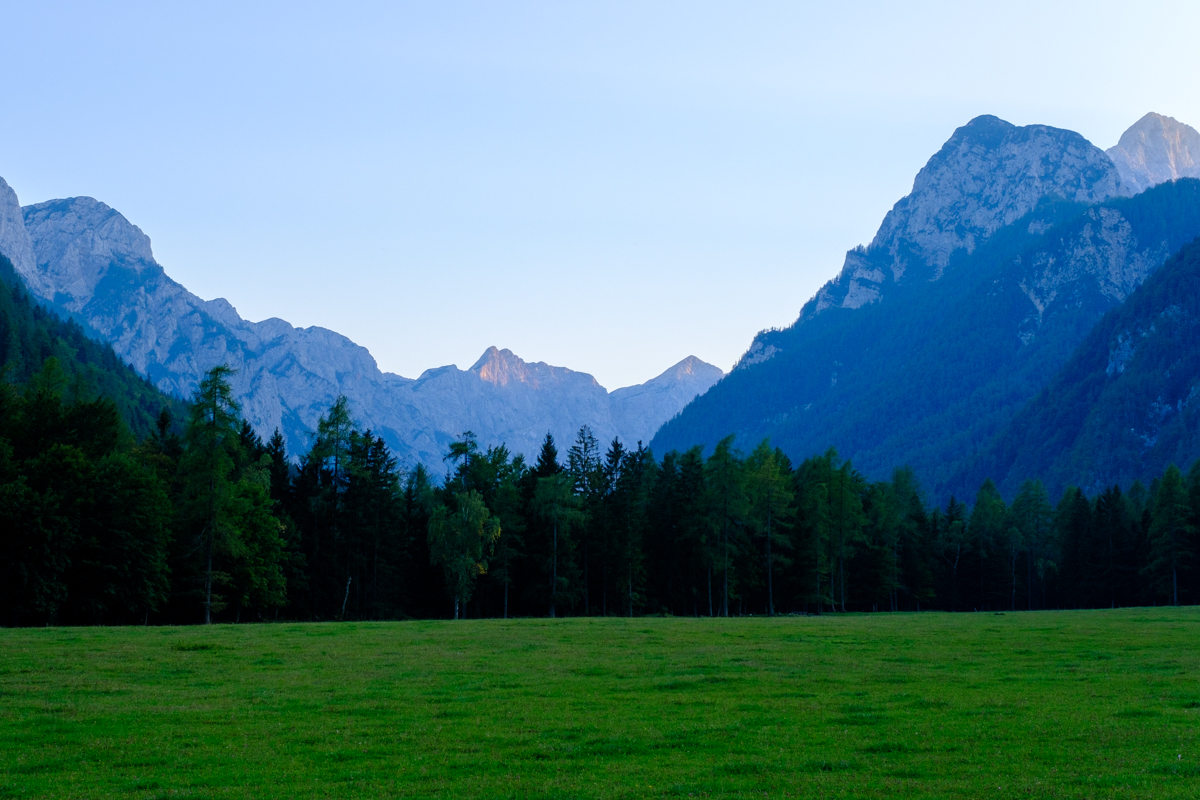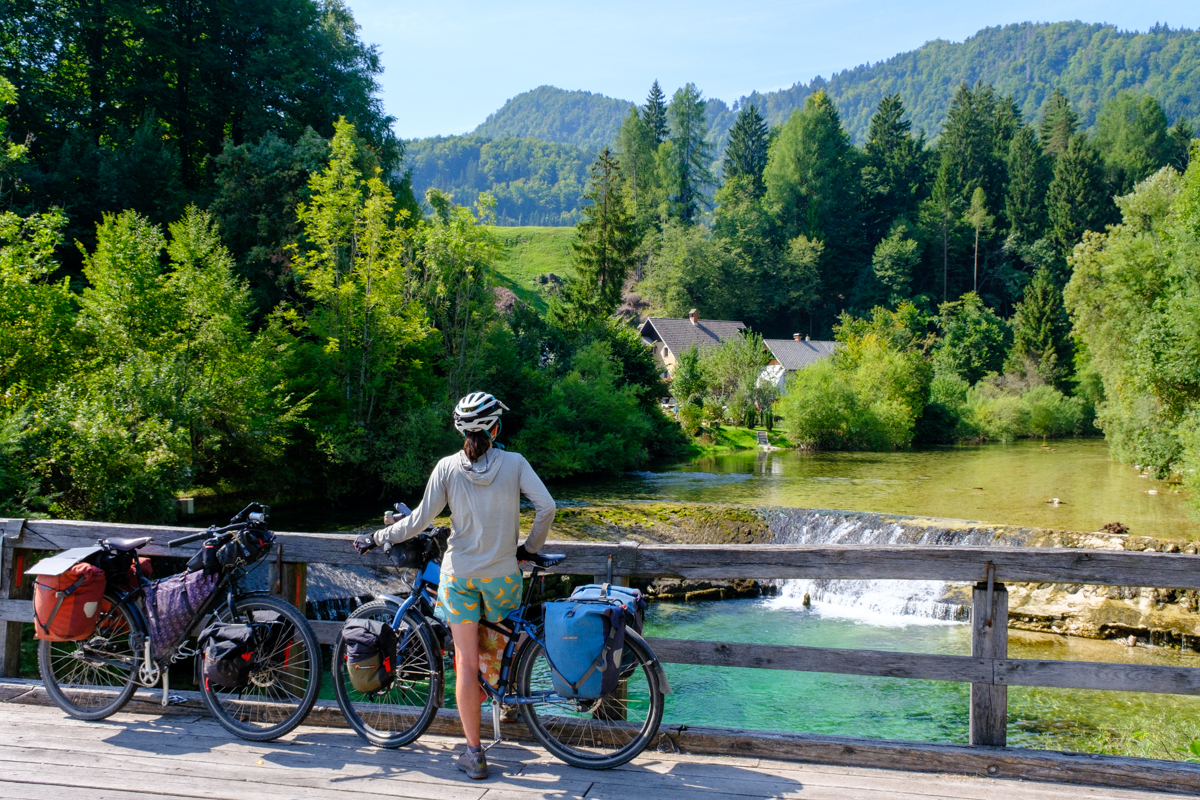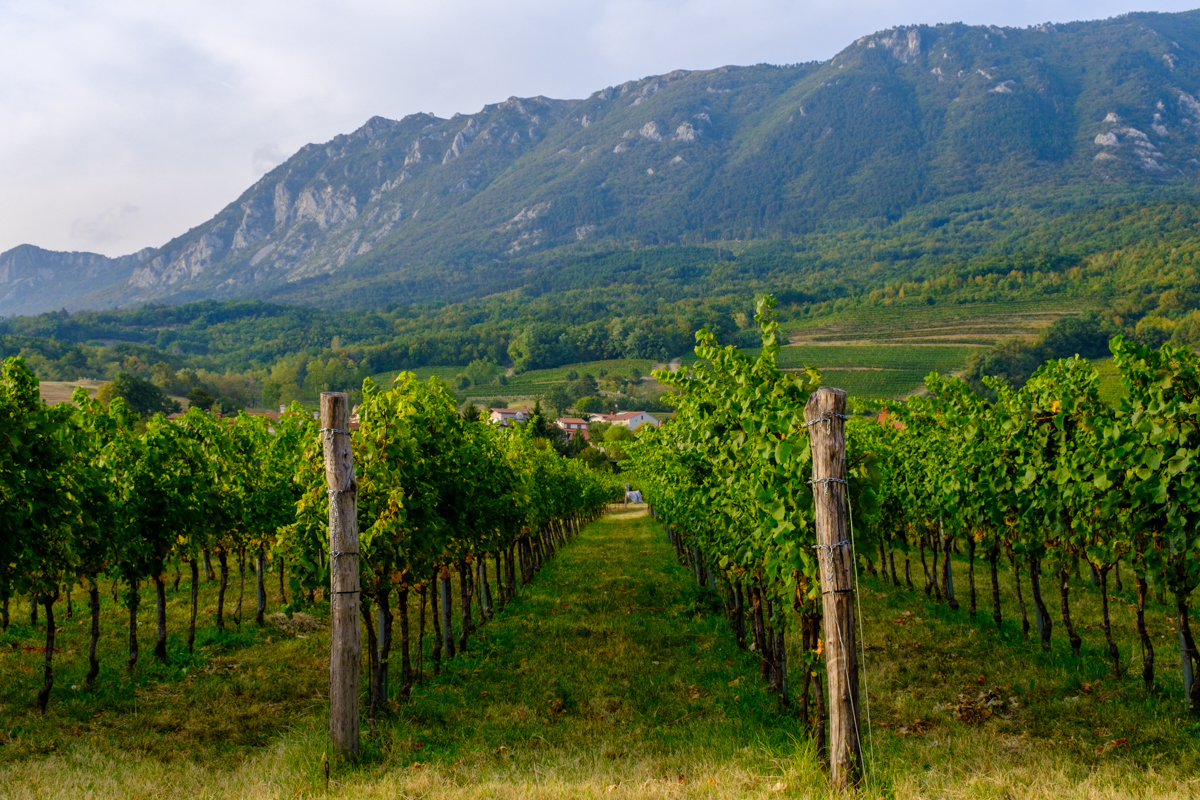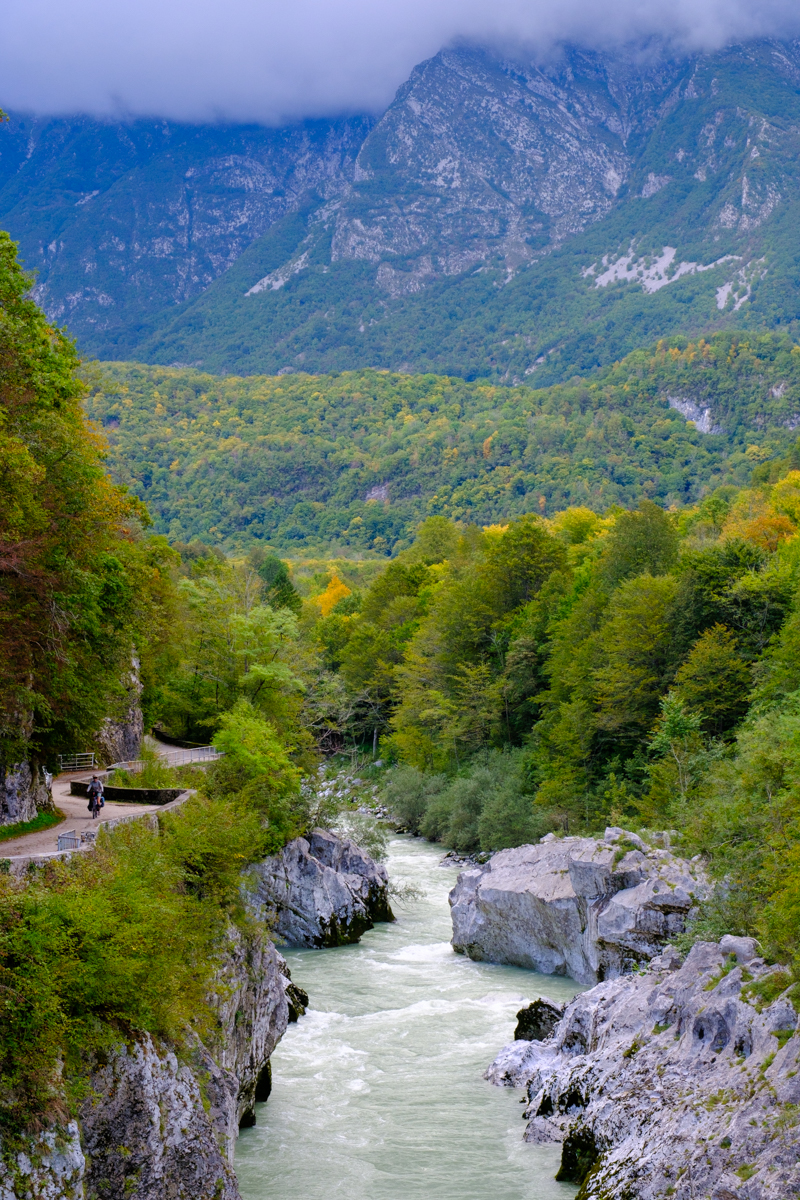Bikepacking Western Slovenia
Introduction to the Balkans
Crossing borders in the Schengen Zone of Europe is exciting mentally but a little anticlimactic externally. There is no border guard station, no passport stamp, no customs. Just a small sign, if you’re lucky, letting you know that you’ve crossed into another country. Slovenia lies within the Schengen Zone but marked our entry to the Balkans and a new phase of our tour, so we were thrilled despite the inconspicuous border.
Our highest priority in Kranjska Gora, the first town we came to, was to find a bakery and sample some local pastries. We had our first burek – a spiraled filo dough pastry filled with cheese, and some sweet walnut rolls. If you’ve read any of our previous posts, you already know that we’re obsessed with European bakeries, and the Balkans are home to many regional treats that we came to love.
Route

Download the full GPX track of our ride through Slovenia NOTE: This is not a polished route and is intended for research and planning purposes only.
Triglavski National Park and Lake Bled
We rode a portion of Bikepacking.com’s Slovenia West Loop to travel through Triglavski National Park and Lake Bled before making our way to Ljubljana, Slovenia’s capital. Triglavski National Park encompasses the Julian Alps, and we skirted along the foothills past bright gray mountains rising in the distance. There was very little traffic where we were riding, so we were free to relax on the road and take in the scenery.


Lake Bled is one of Slovenia’s most popular tourist destinations, but despite being there on a Saturday it didn’t feel very crowded. We had been wild camping for over two weeks, and Jenny took the first reasonable opportunity to go swimming in the clear blue lake. The water temperature was perfect and wonderfully refreshing.


Iron forging town of Kropa
From Lake Bled we climbed back up into the mountains rather than riding through the busier urban areas leading into Ljubljana. The scenery was spectacular, with churches on hilltops and sweeping vistas of the surrounding mountains and valleys. We rode through the historic town of Kropa, which is famous for its tradition of metalworking. The earliest smelting furnaces in the town were recorded in the 14th century, and traces of the iron forging trade can still be found throughout the town.



Questionable Campsite Choices
On our second night in Slovenia, we camped downhill from a church along the main road but felt like we were hidden from view of people driving by. We didn’t consider the fact that the church was a popular lookout spot, as it was one of the few places along the road that people could park. Throughout the night, people would stop at the pullout and hang out for what seemed like hours at a time, all the while playing loud music. You can’t really complain that much when you’re stealth camping, but it was definitely one of the more stressful sites we chose.

Ljubljana
We got a hotel for a night in Ljubljana so we could explore Slovenia’s capital. The city has a relaxed promenade along the Ljubljanica River with lots of cafes, bars, and examples of stately Austro-Hungarian architecture. We walked up to Ljubljana Castle to watch the sunset, and we were pleasantly surprised to find that the castle grounds were open fairly late. The castle walls provided expansive views of the city and surrounding mountains.



Slovenian Countryside and the Soča River Valley
From Ljubljana, we mostly followed the EuroVelo 9 through the countryside past vineyards, castles, and pristine forest. While we were taking a gratuitous dirt road suggestion from the Bikepacking.com route, a concerned local cyclist stopped us and told us there was a much better option nearby. We chatted with her for awhile, and she picked some grapes for us from the vineyard we were standing in. We had wanted to sample them but weren’t sure if the farmers would get mad, so we gladly accepted the bunches of fruit that she gave us.


The Soča River is a tantalizing shade of blue and unbelievably clear. It cuts through a rocky canyon that supports charming towns centered on agriculture, adventure sports, and historic sites.

Most na Soči
We biked through Most na Soči, which lies at the confluence of the Soča and Idrijca Rivers. Most na Soči is the site of exceptional archaeological finds dating back to the late Bronze Age (3300 BCE to 1200 BCE), and it is one of the most important prehistoric settlements in Europe.

There are also remnants of Roman houses in the city. We went to one that was in the middle of a normal neighborhood, sandwiched between two modern houses. Only the lower walls and foundations were still intact, but you could get an idea of the floor plan and the building materials. The house even had a sauna room, and the stone bench where Roman inhabitants used to sit was still there, butt grooves and all.


Bimobis Circular Cycling Route
We used the Bimobis bike route to travel along the Soča River before crossing into Italy and down to Trieste. The Bimobis incorporated a great section of bike trail following the Soča River and a low-traffic road along the Natisone River in Italy.




Hey you two. As alway, its nice to read and watch your youtubes.
What time of the year you were here, in Slovenia? Was it cold at night? Did you felt safe?
Keep rolling.
Noam
We were in Slovenia around mid-September. The temperatures were very pleasant and it didn’t get too cold at night from what we can remember. We felt very safe and really loved our time in Slovenia – it’s a beautiful country!
We don’t plan to camp . Do you know if there are hotels along the route ?
Thanks